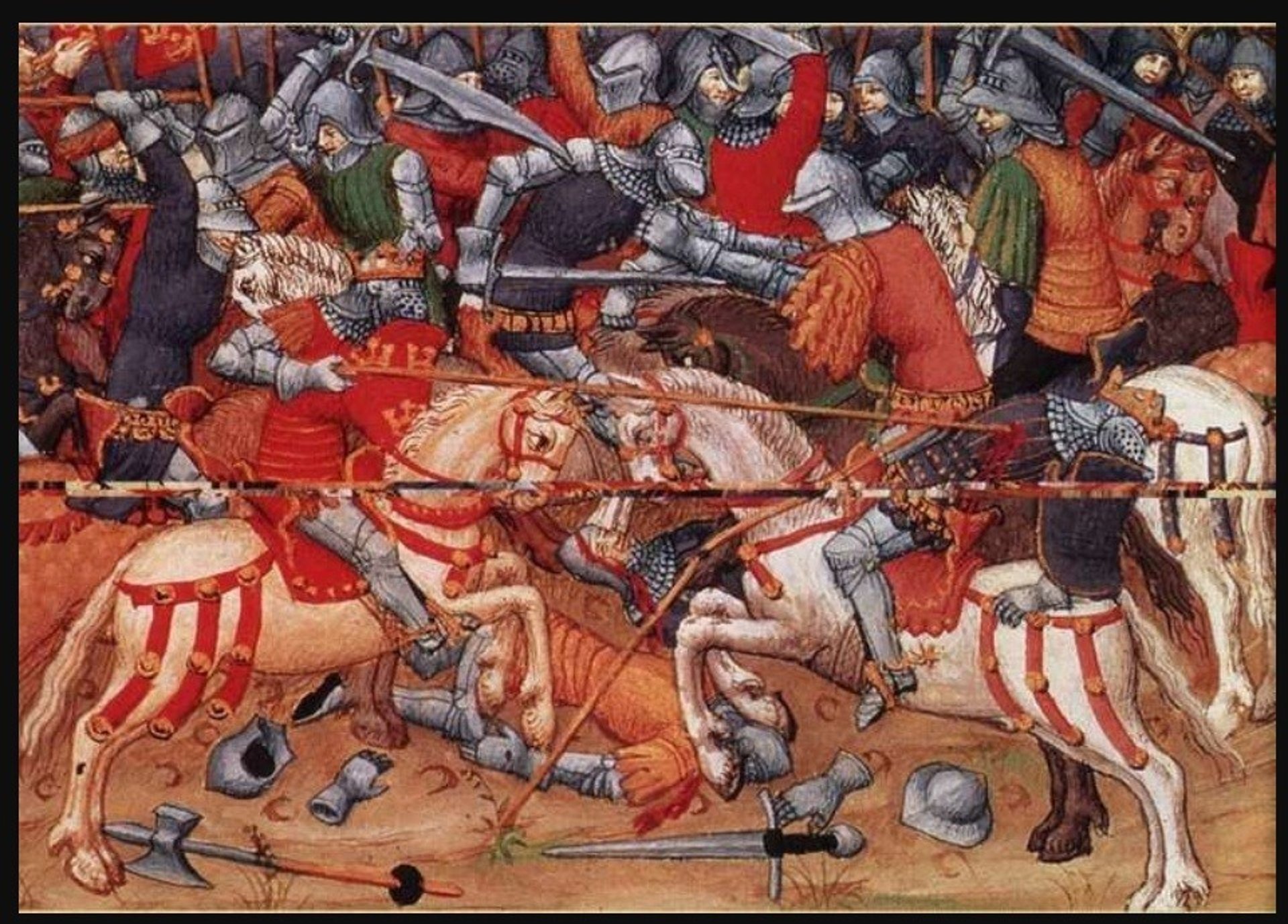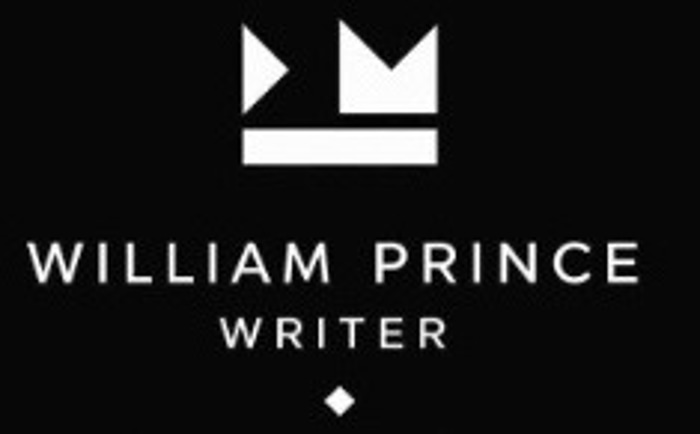
The answer is simple really, as a small child I loved TV programmes like Robin Hood, William Tell, and Ivanhoe, and I would spend hours happily recreating their adventures with my own collection of toy soldiers, and basically, I suppose, I never really grew up. As I got older I ‘discovered’ writers like C. S. Forrester, Alexander Kent, Patrick O’Brian, Arther Conan Doyle and, much later, Bernard Cornwell, Simon Scarrow and Conn Igguldon. All these writers both thrilled and encouraged me, but it was Conan Doyle’s Sir Nigel and the White Company that kept drawing me back into the era that I really loved, the medieval period.
When I first considered writing my own novel it was because, at that time, there wasn’t a medieval Sharpe, Hornblower, Bolitho, or Captain Aubrey and I desperately wanted to read about one, so I began to contemplate what sort of setting a character like this would inhabit and The Wars of the Roses seemed to be a great fit. So began a long journey. I realised fairly soon that an active imagination is only a small part of writing a historical novel, and that being reasonably knowledgeable about a subject will only get you so far.
I had read that Conan Doyle was both diligent and methodical in his research and that Cornwell, Kent and Forrester and the other authors I liked were also extremely well read and knowledgeable about their chosen periods. I absolutely wasn’t, and what is more I did not know how to become expert enough to research the period that I was interested in. So, I decided to enrol on a History Degree at my nearest university. Although I thoroughly enjoyed university, and would do it all again in an instant, the period I was particularly interested in wasn’t covered. My degree, however, did give me the ability and tools to conduct my own research.
Now that I felt equipped with enough knowledge to begin researching my period. I had some ideas about characters and how the story should go, but could I actually write? This is a question that most authors seem to continually ask themselves, and of course I am no exception. I could put ideas down on paper, I could write an essay or a dissertation, but could I engage a reader long enough for them to enjoy a story?
My next step was to join a writing group, and this is something that I would thoroughly recommend to anyone who wants to become a writer. The people in the group were great, there was a healthy mixture of poets, play rights, screen writers and fiction writers, covering all kinds of genres, and although I still had doubts about my own abilities, these folk were a great encouragement.
It seemed as if all the ingredients were in place, I had started working on my first draft, I had help with people reading what I was producing and, of course, I was engaging in research.
Oh my God! Research. You can never do too much; too much is never enough and yet you can spend all your time researching and never have time to write.
Research can become a Siren song, steering you away from the writing process and onto the rocky shores of doubt and insecurity. I once spent a full week, yes seven long days, researching the amount of time it would take a medieval trading cob to travel from Calais to London in the spring. I found myself looking at tide patterns and the ratio between the length of a ships hull and wave shapes and all kinds of other stuff. I followed this up by researching how tallow candles were made and how they would smell and the amount of light they would produce. I could go on. The point being I had all of this information at my finger tips and then deleted the chapter and the character that they were related too, and I only wish that this was an isolated incident!
From the very beginning I envisaged taking my main character, Rob, through all of The Wars of the Roses from 1455 until 1485. When I sat down to write, however, I found that 1453 and the skirmish at Heworth Moor seemed a more sensible place to begin. This obviously meant covering a period of at least thirty two years, or possibly a couple, more if I decided to write about the battle of Stoke. I also wanted Rob to be reasonably fit at Bosworth, so therefore he has to be young enough at the start of the books, so as not to be a relatively old man by the end.
I originally had some misgivings about having a teenager as a main character, as I certainly wasn’t planning on writing teen fiction and wanted my novel to appeal to an entirely different readership. At the same time, however, I felt by creating a young Rob, I was giving readers the opportunity to see him grow and develop into a man. Hopefully this is something that I will be able to achieve, after all we were all young once, and if I try hard enough, even I can remember the frustrations, excitement and anxieties of youth.
Accuracy versus excitement
I am fully aware that there will be some who have read my book who will be tearing their hair out at some perceived error I’ve made and others who will roll their eyes at the sheer amount of pointless historical detail, but I have come to realise that you can’t please everyone and particularly on historical accuracy. It is a fine and dangerous line you tread when you embark on a historical novel.
Even in its purest form History is about opinions, and perceptions. If you and someone else witnessed an incident, there would almost certainly be differences in the statements you produced. Now if you take those differences in perceptions and viewpoints and then add in a healthy amount of, say political bias, or gender, or religious attitudes. Then you can understand that our view of the past can only be interpretive, because even when trying to be objective we all view things through a myriad of different coloured lenses.
Historians can’t always rely solely on primary source material, and end up trying to understand records of events that are further distorted by previous chroniclers who have, often unwittingly, added their own bias and further distortion. Perhaps Nietzsche was right about truth, after all.
Therefore, even a writer who is entirely committed to producing a factual account of events, will inevitably miss their mark. And someone who is trying to provide a work that is designed to be fairly light and entertaining will only fall farther from the bullseye.
I know that in my narrative there are things that wouldn’t necessarily stand up “in the court of historical accuracy”, but that’s ok. I know I have tweaked bits here and there, because my novel is just that, a work of prose with some degree of accuracy.
The journey through the publication minefield.
By the time I had my first ten thousand words, I started looking for an agent, and or, publisher. At first this was quite exciting, and even amongst the host of rejections, I had a couple of well respected names interested in the book.
By the time the book was completed I had become thoroughly dispirited by the traditional publishing route. I had met and spoken with a number of published authors and though the majority of them seemed to be happy with the input of their editors, most of their experiences were not altogether very encouraging. So I decided to consider self-publishing.
At first my opinion of self-publishing was pretty negative. I thought that self-publishing was perhaps a route for writers, who weren’t quite good enough to get a book deal, and while I am aware that some people reading this will still hold that opinion, I found that this was not necessarily the case.
Self-publishing has given me a sense of ownership and freedom. Yes, it is difficult at times, and I’m aware that I will never be rich, but my book is out there being read by real people, and that is exactly where I wanted it to be.
Once I had decided that self-publishing was the way forward for me, I began speaking to other self-published authors and started to plan. First of all, I identified a couple of people who would read my completed novel and give me honest feedback. This is tricky, because you need to find people who will enjoy and are familiar with your genre, and are not afraid to be truthful at the expense of your ego. I also paid to have the manuscript appraised. I still think that this is a good idea, even though my experience was less than affirming. Once the book was edited, for the umpteenth time, I went about having the book proofread and type set. I’ve since found out that this isn’t necessarily the best order to go about things and that I would probably have been much better off having a copy edit first, then a typeset and then a proofread.
I was very lucky in finding an excellent, and very patient typesetter.
A friend, who is also self-published, recommended the excellent Caroline Goldsmith from Goldsmith Publishing Consultancy. Caroline has been absolutely brilliant with me. She has the patience of a saint and a huge amount of knowledge. I can honestly say that without Caroline’s help and judgement I would never have been able to publish my book. I have heard of people finishing their book and simply uploading it to Amazon. Do not do this! Get your book ready before you publish, it will cost you, but it is the only way.
While Caroline was holding my hand and guiding me through getting my narrative fit to publish I was trying to find an illustrator for my cover.
This can be another minefield I’m afraid. I have absolutely no skill when it comes to drawing or graphic design, like my dad used to say, “Son, you couldn’t draw water.” Harsh, but true.
I really did not know where to start until a friend asked me which book covers I particularly liked. The answer was easy I loved Simon Scarrow’s Eagle series covers, and I found out that the ones I particularly liked were produced by someone called Tim Byrne. Like Caroline, Tim has been such a wonderful help. It was a bit of a leap of faith contacting Tim because I thought that he would probably be far too busy to deal with the likes of me, but he was great. We had a couple of telephone chats and he asked to read my manuscript. His feedback was really positive and he said that he had some ideas.
Wow! I was immediately blown away by Tim’s artwork. I couldn’t really have expressed what my cover should look like, but it was if Tim had read my mind. Tim produced a few variations on a main theme, and they were all brilliant, but I especially love the one that I eventually chose.
I know from speaking to other self-published authors, that the cover design process can be difficult and stressful, but from my point of view working with Tim has been nothing but a pleasure. He was committed to the project from the very beginning and has been as helpful as possible.
I have already started on my second and third books in the series and I have both Caroline and Tim on standby.
You can contact Caroline at goldsmithpublishing@gmail.com
And see some of Tim’s excellent work at https://byrnedesign.com
If you are interested in my future book plans, please look at the ‘Rob's Story Continues’ section of my blog.
W. Prince
Spring 2025.
